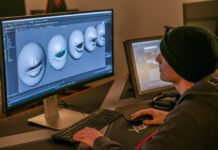
[dropcap]Changes[/dropcap] in technology mean our world faces very complex problems that require skilled science, technology, engineering and math (STEM) personnel, says Dr. Ina Agnew, the vice president of student services at OSU Institute of Technology.
“Manufacturing, for example, requires a workforce that understands computer programming and robotics,” Agnew says. “Unless we adequately teach these subjects and encourage students to select STEM careers, we jeopardize our economic welfare.”
OSU Institute of Technology understands this challenge and has a strong initiative to strengthen Oklahoma’s workforce and fill the nation’s skills gap, says Agnew.
“We have industry partners who are willing to sponsor students in STEM fields through a variety of funding models,” Agnew says. “Some companies will offer scholarships, others loan repayment programs or educational reimbursements with paid internships, and finally offers of employment established at the start of the student’s college experience. Students know, before they even take their first class, where they will be working upon graduation.”
Choctaw Defense, for instance, has a signing ceremony for students they sponsor in manufacturing. These students receive scholarships, have paid internships in the fourth semester of their program and know that upon successful completion of the internship and graduation from college, they will be working for one of our nation’s leading Native American defense manufacturers.
“For the state of Oklahoma, we understand the need to produce more STEM graduates,” Agnew says.
For example, the governor holds an annual STEM Summit where leaders in business, industry and education come together to discuss public/private partnerships, recommendations from the Governor’s Council on Science and Technology and critical workforce needs.
“By bringing these stakeholders together, we have the opportunity to work together on strategies to improve STEM education and influence career choice,” says Agnew.
In the 2015 annual report “Degrees of Progress: The State of Higher Education in Oklahoma,” Oklahoma is ranked by the U.S. Chamber of Commerce Foundation as 16th in STEM job growth in the nation.
Oklahoma colleges and universities reached a record high during the last academic year, with more than 6,000 students receiving degrees and certificates in STEM – a 28 percent increase in STEM degrees over the last five years.
“At OSUIT, we’ve seen an increase in the number of students entering into STEM programs of study,” says Agnew. “The School of Arts and Sciences is our largest school – however, new student enrollment increases have been driven by students entering into programs in the Schools of Construction Technology, Diesel & Heavy Equipment, Engineering Technology and Nursing and Health Sciences.”
Additionally, across the nation, there has been an intensive effort to attract more women into STEM fields.
“Businesses realize that women comprise an underutilized labor resource to address the skills gap in many technical fields,” Agnew says. “Women do not know about many of the fields or career opportunities, nor are there many female family members to whom they could turn for advice.
“At OSUIT, we have developed strategies, programs and partnerships with industry partners to attract more women in STEM programs, and our industry partners couldn’t be more delighted,” Agnew says. “They, too, have programs to attract more women into these career paths and have been very supportive of our efforts.”
























